In this series of posts, I document an extraordinary trip to 10 churches in the Shida Kartli region. In this specific post, I share photos from that trip. For more detailed descriptions, see my post on Rkoni Monastery, or the incredible medieval "Tamar" bridge near to Rkoni.
This trip is accessible by jeep tour only. To book your tour, contact us directly!
The Kvatakhevi Monastery (12th c.), Kartli

The Kvatakhevi Monastery is at the top of a box canyon in the northern hills of the Trialeti mountain range. The dirt track leading to this historical site comes from the Mtskheta-Kaspi road along the Mtkvari river, near the village of Kavtiskhevi.
The Monastery dates to the 12th century, and was an important center of Christian worship throughout the middle ages. Several existing manuscripts are known to have been copied in the scriptorium there.
In the 19th century, much of the monasteries treasure was 'borrowed' and is now part of the Moscow State Historical Museum collection, a fate of many important historical artifacts in Georgia.
Kvatakhevi is connected with the history of liturgical chant in the figure of Archimandrite Tarasi Aleksi-Meskhishvili, a 19th century abbot of the monastery. He was responsible for rebuilding the monastery, especially rebuilding the damaged dome and putting on a new roof. He was an expert chanter, and helped train Grigol Karbelashvili to chant in the mid-19th century. Grigol's five sons would be the last generation of expert chanters in East Georgia.
More photos of Kvatakhevi Monastery:
The Ertatsminda Cathedral (12th c.), Kartli

The Ertatsminda (One is Holy) Cathedral is located in the center of a small village with the same name.
The cathedral is gigantic, well built, and very impressive for such a small village. It's architectural form, a dome on top of a cross-form plan, is typical of the great cathedrals built in the "Golden Era" of Georgian prosperity (12th-13th centuries). It's smooth sandstone blocks, ornate carving, and bold exterior presentation are emblematic of the projection of power during that period. Similar exemplars of this architectural period include the nearby Kvatakhevi, Pitareti, Tsughrughasheni, Betania, and Ikorta monastery churches.
The church has an unusual dedication: that of St. Evstati of Mtskheta, a martyr saint executed in 550 AD by Persian Zoroastrian authorities. The story of this saint is told in a hagiographic narration written shortly after his death, representing some of earliest layers of Christian hagiography. Scholar Stephen Rapp and others have written about this important work.
The Chachubeti church of the Mother of God is located on a bluff above the hamlet of Chachubeti (pop. 26 in 2002, maybe less now). The town is 29 kilometers from Kaspi, on the road to Rkoni.
The church dates to the 10th century, though it was renovated in the 13th-14th centuries, according to the sign posted outside. The basilica measures 35x25 feet, and has three entrances. There are only a few fresco fragments remaining.
The view from this church is stunning, if you have a chance to stop and take a look around.
The Maghalaant Church (12th c.), Kartli

The Maghalaant basilica dates from the 12th-13th centuries, a period of general prosperity and construction in East Georgia.
In the 15th century, the Maghaladze clan from Imereti were given the lands near the entrance to the Kvatakhevi gorge. They fortified the church with exterior walls and a guardhouse, giving the church its current name. The family grew in importance in the late 17th century, and were awarded tavadi (duke) status in 1701 by King Erekle I of Kakheti.
The bell-tower and defensive walls were further fortified in 1716 by one, Solomon Maghaladze, according to a placard, but have since fallen into near ruin.
Inside the church, incredibly detailed and creative frescoes are in very good condition, but are in severe need of cleaning and restoration work.
More photos of the Maghalaant Church:
The Ikvi Church (11th c.), Kartli

The Ikvi church is one of the most picturesque small chapels in all of Georgia. It's elegant dome, set on a tiny floorplan, sits alone in a forested gorge. In the past, the village of Ikvi existed somewhere nearby, but today there isn't a trace of it left.
It is also somewhat mysterious. No legends survive, no stories of attack, martyrdom, or divine healing surround this church. It's almost as if the oral history of the church has been forgotten.
At the beginning of the 20th century, the church was in bad disrepair. Records show that in 193901940 some restoration work on the walls was completed. More recently, a thorough restoration project has just completed. I was extremely impressed to see the quality of renovation (a rarity in construction projects in Georgia): new roofs, holes patched, a new door, and all done with taste and care. Furthermore, all trash and construction materials had been removed. Not a single sign exists to document the work either. One either notices it, or not!
Plans of the Ikvi Church:
But the church couldn't have been that bad off, because an incredible number of frescoes survive! These look original to the 11th-12th century building, and are remarkably intact. For fresco aficionados, Ikvi church is a "must-visit." I couldn't believe the composition and detail. Moreover, despite the plan of the church being tiny (only 30x25 feet), it displays only the highest quality masonry, exterior ornamentation, architectural proportion, and interior wall painting.
More photos of the Ikvi Church:
The Rkoni Monastery Complex (7th-18th c.), Kartli

For the full description with videos and photos of the monastery complex, see our post on jeep tours to Rkoni Monastery.
A separate post describes how to find the medieval "Tamar bridge" near the Rkoni monastery. The bridge is also one of the architectural wonders of Georgia, and shouldn't be missed!
The St. Simeon Stylite tower church (12th-13th c.), Kartli

See our post for the full description with videos and photos of the St. Simeon Stylite tower church and frescoes.




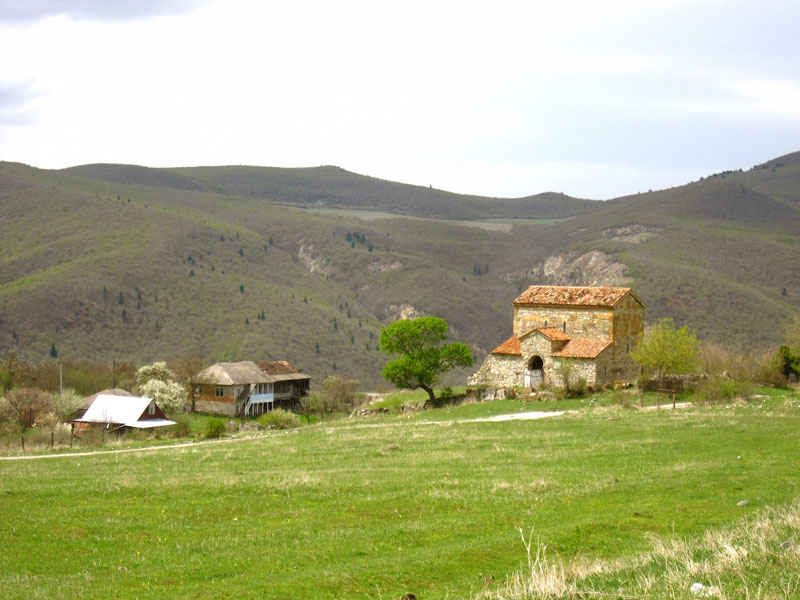
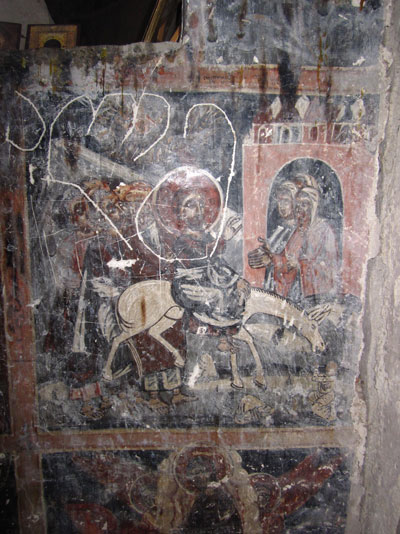
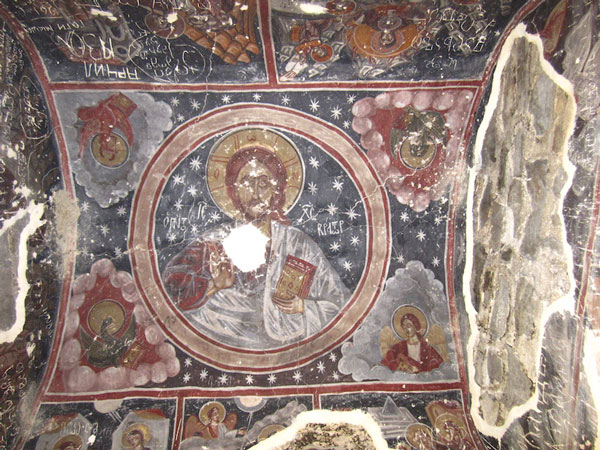
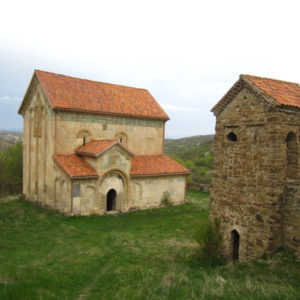



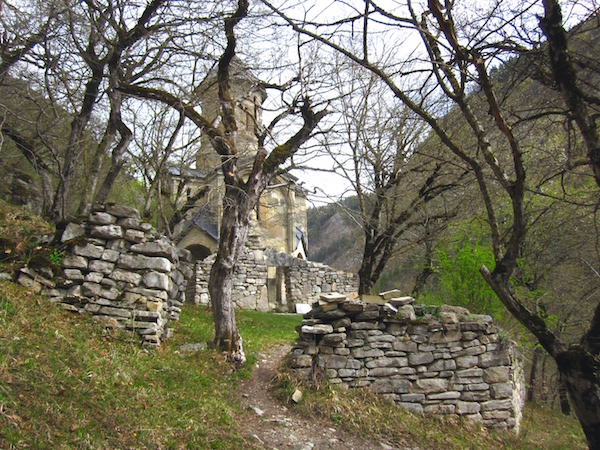



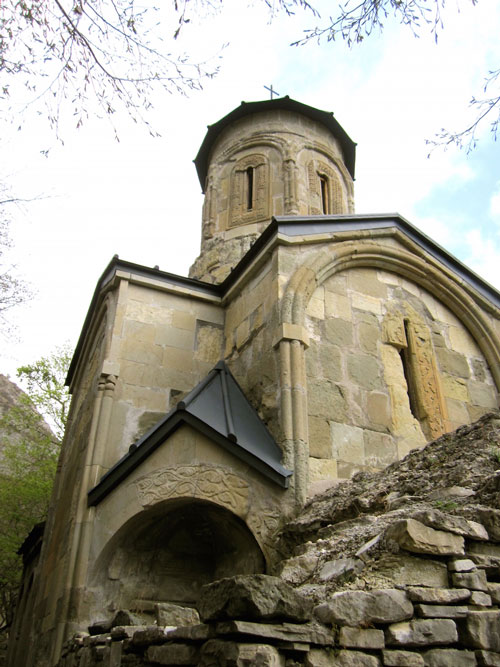
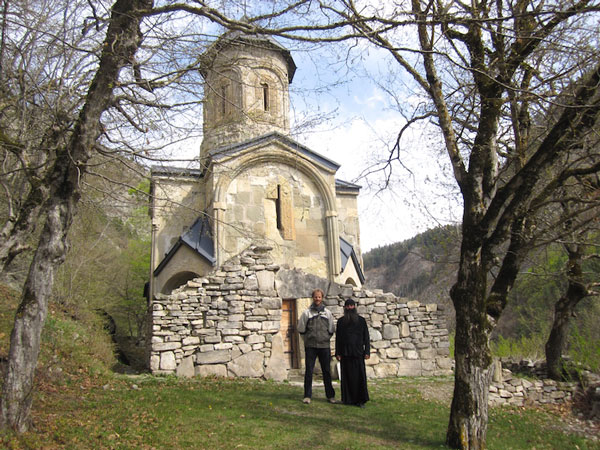




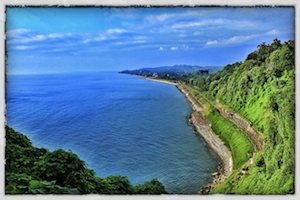


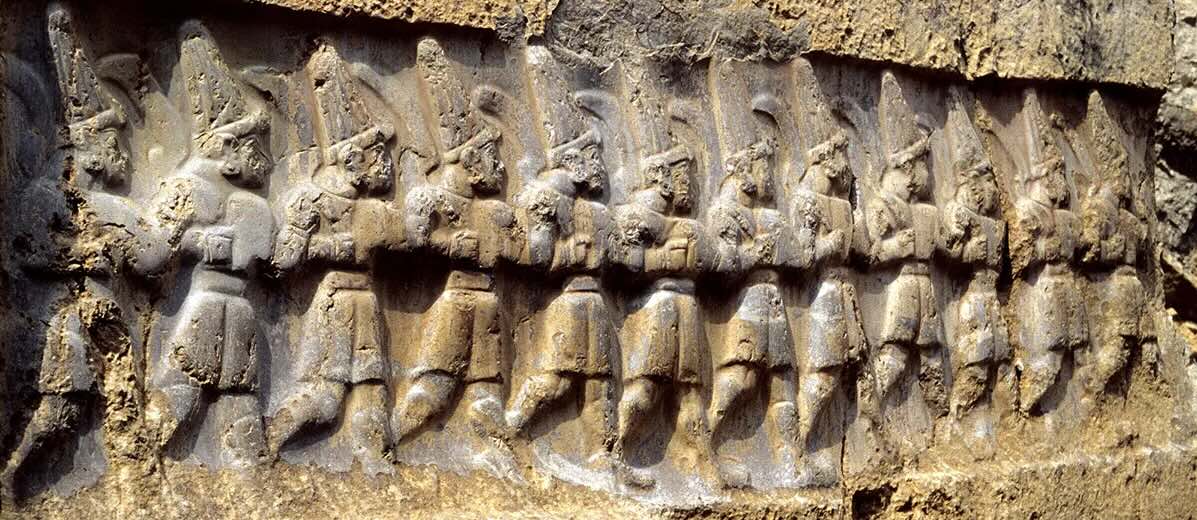
Mike Bourgaul
I went to Kvatakheti Church because I had read what happened in times gone by. The icons inside depict the tragedy. It is worth the visit and I am happy to see you included the monastery in your tour.